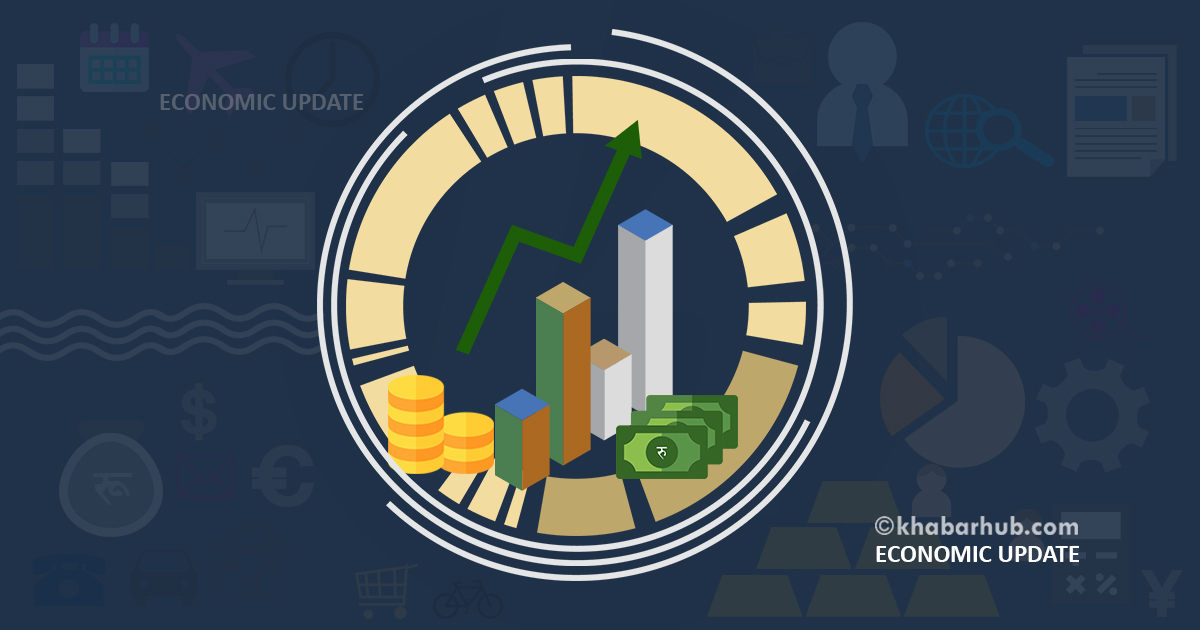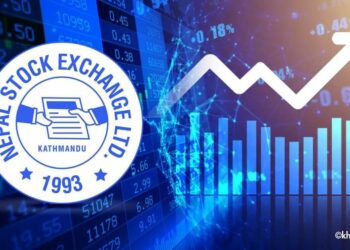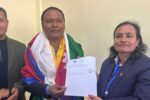KATHMANDU: Economic Digest offers a concise yet comprehensive overview of significant business happenings in Nepal, presented in easily digestible summaries.
Positive trends in Nepal’s economic performance
Over the past nine months, Nepal’s economy has displayed favorable trends across key indicators.
The Nepal Rastra Bank’s recent report indicates stable Consumer Price Index (CPI)-based inflation, a surplus in the balance of payments, and an increase in foreign exchange reserves.
Notably, CPI-based inflation dropped to 4.61 percent year-on-year (y-o-y) compared to 7.76 percent in the same period last year. Within the food and beverage category, there were notable increases in price indices for spices, vegetables, pulses, and cereals, although ghee and oil saw a decrease.
While certain sectors experienced fluctuations, the overall economic scenario of Nepal over the past nine months reflects positive trends in inflation management, balance of payments, and foreign exchange reserves.
Nepal’s Current Account and BOP Surplus Signify Economic Strength
Nepal’s economic landscape boasts positive signs as both the current account and Balance of Payments (BOP) reveal surpluses in the recent review period.
The current account surplus, marked by Rs. 179.48 billion and $1.35 billion in local and US Dollar terms respectively, contrasts sharply with previous deficits.
Despite a decline in capital transfers, sustained positive net foreign direct investment (FDI) underscores Nepal’s attractiveness to global investors.
The BOP surplus, reaching Rs. 365.16 billion and $2.75 billion, signals a robust international payments position, boding well for future economic endeavors.
Surge in Remittance Inflows
Remittance inflows into Nepal experienced a notable surge, increasing by 19.8 percent to Rs. 1082.62 billion in the review period. Although this growth rate is slightly lower compared to the previous year, the absolute value remains substantial, underlining the continued significance of remittances to Nepal’s economy.
In US Dollar terms, remittance inflows rose by 17.7 percent to $8.15 billion during the same period. However, shifts in labor migration patterns, indicated by a decrease in the number of workers seeking foreign employment approvals, raise questions about future remittance trends.
Monitoring these dynamics closely will be crucial for policymakers and stakeholders to ensure sustained economic stability and growth in Nepal.
Boost in Foreign Exchange Reserves Bolsters Economic Confidence
Nepal’s economy demonstrates resilience and strength as gross foreign exchange reserves witness a notable increase.
NRB data reveals that gross foreign exchange reserves surged by 24.2 percent to Rs. 1911.86 billion in mid-April 2024, up from Rs. 1539.36 billion in mid-July 2023. Similarly, in US dollar terms, reserves increased by 22.7 percent to $14.36 billion during the same period.
Breaking down the reserves, those held by the Nepal Rastra Bank (NRB) increased by 25.4 percent to Rs. 1688.21 billion, while reserves held by other banks and financial institutions saw a 15.5 percent rise to Rs. 223.65 billion.
The surge, evident both in local and US dollar terms, signifies enhanced economic stability. Notably, reserves held by the central bank and other financial institutions have seen substantial growth, with Indian currency forming a significant portion of the total reserves.
This upward trajectory in foreign exchange reserves underlines Nepal’s capacity to navigate economic challenges effectively.
Govt Expenditure Shrinks, Revenue Shows Positive Growth
Nepal’s recent fiscal review showcases a decline in government expenditure alongside growth in revenue collection. While expenditure decreased by 3.6 percent compared to the previous fiscal year, revenue mobilization surged by 9.4 percent, indicating improved financial management.
Recurrent, capital, and financial expenditures contributed to the government’s spending, while tax and non-tax revenues formed significant portions of the collected revenue.
This shift towards positive revenue growth amidst controlled expenditure reflects prudent fiscal management, laying a foundation for sustainable economic development.
Broad Money Growth and Trade Deficit Trends
In Nepal’s recent economic review, significant trends in broad money (M2) expansion and trade deficit dynamics emerge, shaping the country’s monetary and trade policies.
Broad money (M2) surged by 7.5 percent, outpacing the previous year’s growth, signaling increased liquidity in the economy. Notably, year-on-year figures reveal a robust expansion of 12.3 percent in M2, driven by a substantial rise in net foreign assets (NFA), reflecting favorable foreign currency inflows.
Reserve money also saw significant growth, rising by 6.4 percent in the review period, indicative of proactive monetary policy measures to ensure stability. This growth accelerated to 14.6 percent year-on-year, reflecting effective liquidity management by authorities.
Analyzing these trends provides insights into the effectiveness of Nepal’s monetary policies in managing liquidity and stimulating economic activity, alongside the challenges and opportunities in trade balance management for sustained economic growth.
NEPSE Sees Modest Gain of 8.26 Points
The Nepal Stock Exchange (NEPSE) experienced a moderate increase of 8.26 points, reflecting a gain of 0.42% and settling at 1,974.50 points by the end of Sunday’s trading session.
This growth continued from the previous session’s increase of 5.63 points. Throughout the day, the index fluctuated between an intraday high of 1,981.79 and a low of 1,961.89.
The market demonstrated activity with 311 stocks exchanged in 49,764 transactions, totaling 7,857,031 shares traded and generating a turnover of Rs. 3.15 Arba. Market capitalization concluded at Rs. 31.30 Kharba, with a float market capitalization of Rs. 10.60 Kharba.
Gold and Oil Prices Surge
Over the past year, both gold and oil prices have experienced significant increases in both international and domestic markets.
Gold prices surged by 17.2 percent to $2401.50 per ounce, driven by geopolitical tensions and economic uncertainty. Similarly, oil prices, specifically Crude Oil Brent, rose by 7.6 percent to $93.12 per barrel, influenced by factors such as supply disruptions and recovering global demand.
In the domestic market, gold prices also witnessed a notable rise, with an increase of Rs. 500 per tola on Sunday (price fixed at Rs. 138,400 per tola while standard gold traded at Rs. 137,750 per tola) as reported by the Nepal Gold and Silver Dealers’ Association. These price movements reflect broader economic trends and highlight the importance of monitoring commodity markets for their impact on local and international economies.
(Compiled and prepared by Srija Khanal)
Economic Digest is a daily morning economic digest, basically relatable summations of the most important business news, and happenings from Nepal into easy-to-understand summaries.









Comment